|
|
|||||||||||||
|
|
|||||||||||||
|
FREE COLLECTION |
||||||||||||||||||||||||
|
WORLD WAR II
4,186 pages of U.S. Army Third Army after action reports covering activity from July 1944 to May 1945. The Third United States Army was first activated as a formation during the First World War on November 7, 1918, at Chaumont, France, when the General Headquarters of the American Expeditionary Forces issued General Order 198 organizing the Third Army and announcing its headquarters staff. From May 1941 until February 1943, the Third Army was commanded by Lieutenant General Walter Krueger. General Krueger made the Third Army the best training army in the United States. From February 1943 until end of 1943, Third Army was commanded by Lt. Gen. Courtney H. Hodges. During this period it was primarily a gigantic training army comprised of hundreds of units from small detachments to full corps. Movement of troops overseas started slowly. But in July and August of 1943, the alert orders flooded the Headquarters in increasing numbers. By 30 December 1943, Third Army had moved to ports, for direct shipment overseas, a grand total of 208,566 officers and men, including five divisions. On 31 December 1943, the Third Army was transferred to combat army status and at 0830 the next morning came the telephone call for which they had waited so long. Third Army's readiness date was 15 February. It was to leave at authorized strength plus a CIC detachment of three officers and 13 enlisted men. By 15 January the entire headquarters was POM (prepared for overseas movement) to the last man and the advance detachment comprised of 13 officers and 26 enlisted men, left for the port. Upon disembarking from the Ile de France, they were met by their new commander. Under the command of Lieutenant General George S. Patton, Jr., the Third Army participated in eight major operations and gave new meaning to "hard charging, hard hitting, mobile warfare." The Third Army's swift and tenacious drive into and through France, Belgium, Luxembourg, Germany, Czechoslovakia, and Austria contributed immeasurably to the destruction of the Nazi war machine of Adolph Hitler's Germany. The Third Army liberated or captured 81,522 square miles of territory. An estimated 12,000 cities, towns, and communities were liberated or captured, including 27 cities of more than 50,000 in population. Third Army captured 765,483 prisoners of war. 515,205 of the enemy surrendered during the last week of the war to make a total of 1,280,688 POW's processed. The enemy lost an estimated 1,280,688 captured, 144,500 killed, and 386,200 wounded, adding up to 1,811,388. By comparison, the Third Army suffered 16,596 killed, 96,241 wounded, and 26,809 missing in action for a total of 139,646 casualties. DOCUMENTS IN COLLECTION CROSSING OF THE RHINE BY THIRD ARMY Crossing of the Rhine River by Third US Army was prepared by the 3rd Army Engineers, 22 March 1945. This 38 page report is a narrative of the crossing of the 3rd Army from the perspective of the Army Corps of Engineers elements within the 3rd Army. 0n 22 March 1945, assault boats carrying men of the 11th Infantry Regiment of the 5th Infantry Division and operated by the 204th Engineer Combat Battalion, silently shoved off from the west bank of the Rhine River at Nierstein, Germany, and the first assault crossing of the Rhine in modern history had begun. Before darkness of the following night, a bridge had spanned the river. Such a firm bridge head had been established on the east bank of the river that there was no longer any question of the success of the operation. Within the next five days, three more crossings were successfully executed and all resistance along the Rhine on the Third Army front had collapsed. This was the most intensive period of engineer planning that had been engaged since the D-day operation of Normandy. TWELVE-THOUSAND FIGHTER-BOMEBER SORTIES Twelve-Thousand Fighter-Bomber Sorties: XIX Tactical Air Command's First Month Operations in Support of Third US Army in France, a 59 page report, dated September 30, 1944. In the report's introduction O.P. Weyland, Brigidir General, Commanding, wrote, "Within one month of the day when the Third US Army and XIX Tactical Air Command of the Ninth Air Force began operations together in France, the armored and infantry divisions and covering fighter-bombers of this new ground-air team had broken out of Normandy into Brittany, conquered all of that peninsula except three stubborn ports, firmly secured the line of the Loire, and swept 140 miles beyond liberated Paris to within 60 miles of the German border. While the events are still warm, these notes and historical record are written, with the hope that some of the many lessons in teamwork and technique which were learned in that eventful month may be of tactical value." AFTER ACTION REPORT, THIRD US ARMY, 1 AUGUST 1944 - 9 MAY 1945 VOL. I OPERATIONS Copied from a microfiche copy of one of the 182 copies of the formally classified history of the Third Army produced by General and Special Staff Sections of Third US Army Headquarters and the XIX Tactical Command. This copy only contains the 306 pages covering action in 1944. The reports contain a day by day narrative account from August 1, 1944 to December 31 1944. AFTER ACTION REPORT THIRD U.S. ARMY STAFF SECTION REPORTS 3,595 pages of Third Army after action section reports copied from microfiche copies. A compilation of 25 section reports of action dating from 1 August 1944 to 9 May 1945. The twenty-five sections include: Command, G-1, G-2, G-3, G-4, G-5, Adjutant General, Anti-Aircraft Artillery, Artillery, Chaplain, Chemical Warfare, Engineer, Finance, Headquarters Commandant, Inspector General, Judge Advocate, Medical, Ordnance, Provost Marshal, Public Relations, Quartermaster, Signal, Special Services, Tank Destroyer, and Air. From the forward, "The section reports in this volume of the after-action report of Third United States Army operations in World War II contain only material out of the mass of detail which is considered pertinent from the viewpoint of experiences in the field of an operating army headquarters. Although insufficiently detailed to cover all operations, they should, in the future, serve as a guide to the highlights of each section - its plans, its experiences, its changes of method of operation, and its functions, as considered important by the chief of section. " SUMMARY FROM THE CHANNEL TO THE ALPS A 17 page summary copied from a microfiche copy, covering activity from August 1944 to May 1945. Contains an incomplete narrative and an appendix of charts and grafts dealing with subjects such as troop levels and reinforcments. TWELTH US ARMY GROUP DIRECTIVES 66 pages of directives copied from a microfiche copy of 68 directives dating from July 29, 1944 to May 5, 1945. THIRD US ARMY DIRECTIVES 105 pages of directives copied from a microfiche copy of 127 directives dating from August 4, 1944 to May 7, 1945. GEORGE S. PATTON'S THE PROBABLE CHARACTERISTICS OF THE NEXT WAR AND THE ORGANIZATION, TACTICS, AND EQUIPMENT NECESSARY TO MEET THEM. In addition to the 4,186 pages listed above, is an 80 page memorandum for the assistant commandant, the Army War College, prepared on February 29, 1932, by G.S. Patton Jr. Major Calvary, titled. "The Probable Characteristics of the Next War and the Organization, Tactics, and Equipment Necessary to Meet Them." "Summary: In view of the facts stated there is a strong probability that the next war will be based on maneuver. Consequently the force best suited to its successful prosecution will be of the professional type." As a finding aid for this title, all convertible text in the documents have been transcribed and embedded under the page image as text. All text capable of being converted can be searched. |
||||||||||||||||||||||||
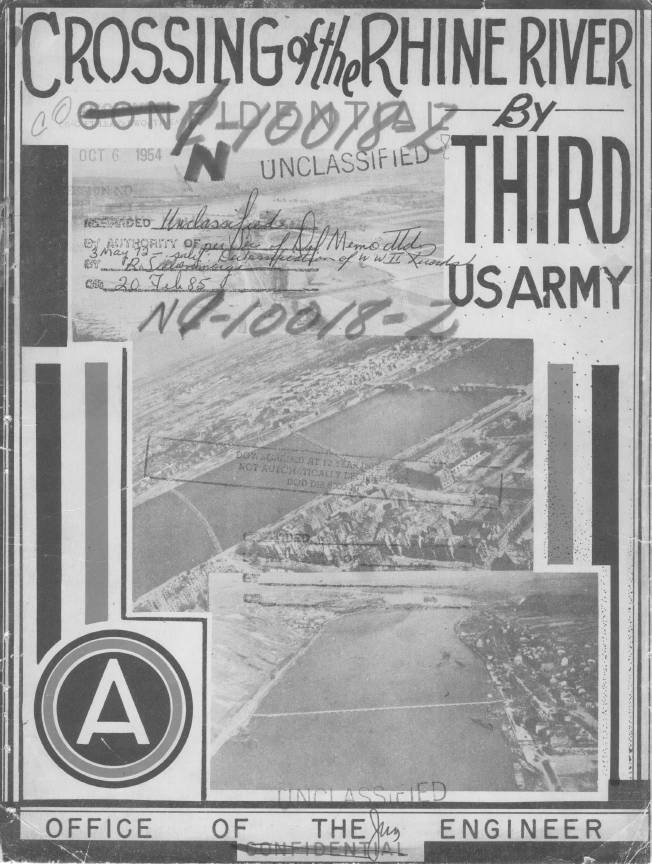 |
||||||||||||||||||||||||
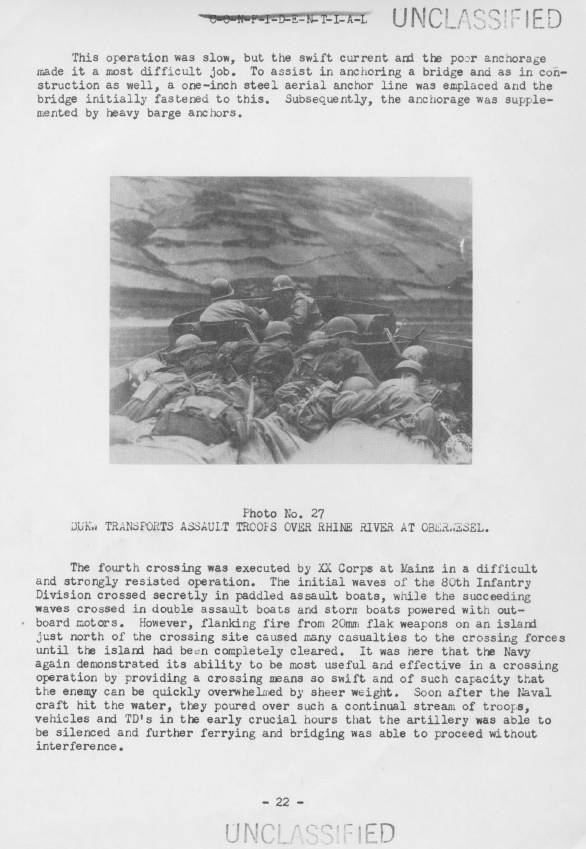 |
||||||||||||||||||||||||
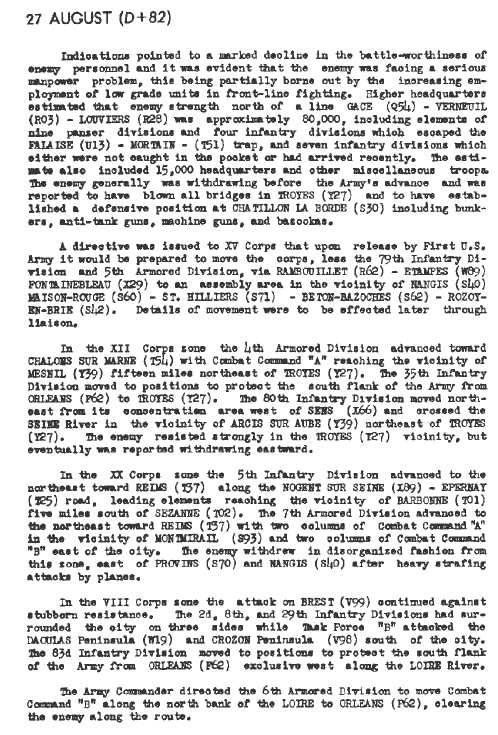 |
||||||||||||||||||||||||
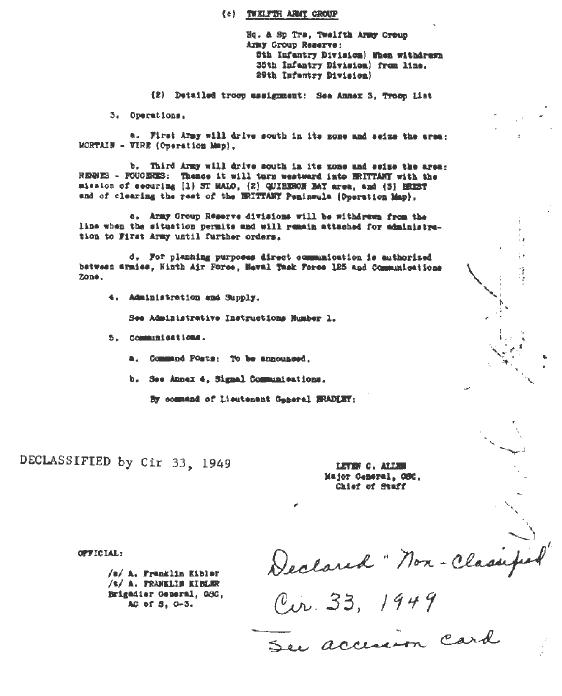 |
||||||||||||||||||||||||
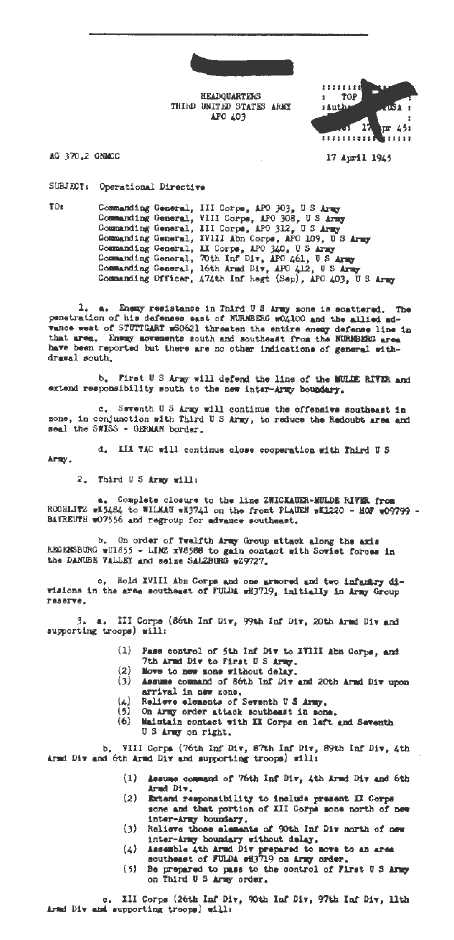 |
||||||||||||||||||||||||
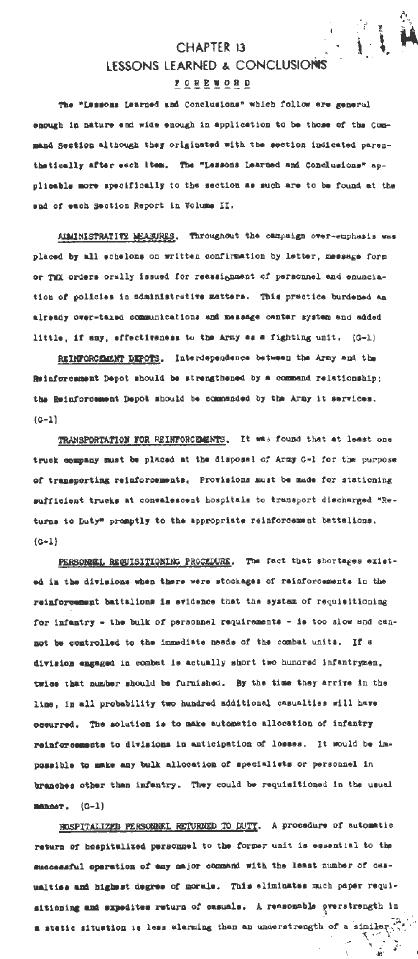 |
||||||||||||||||||||||||
|
FREE COLLECTION |
||||||||||||||||||||||||